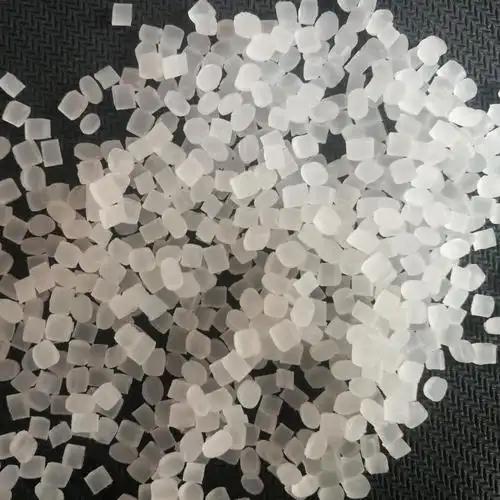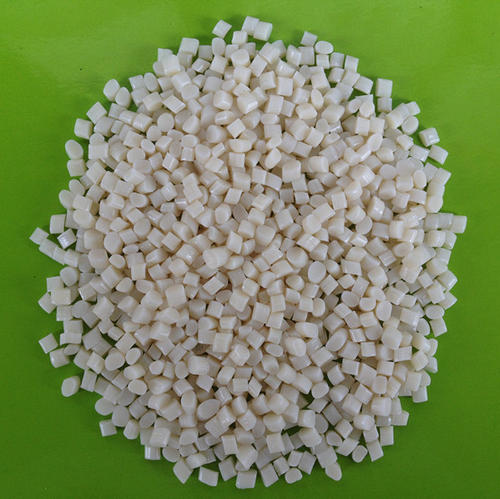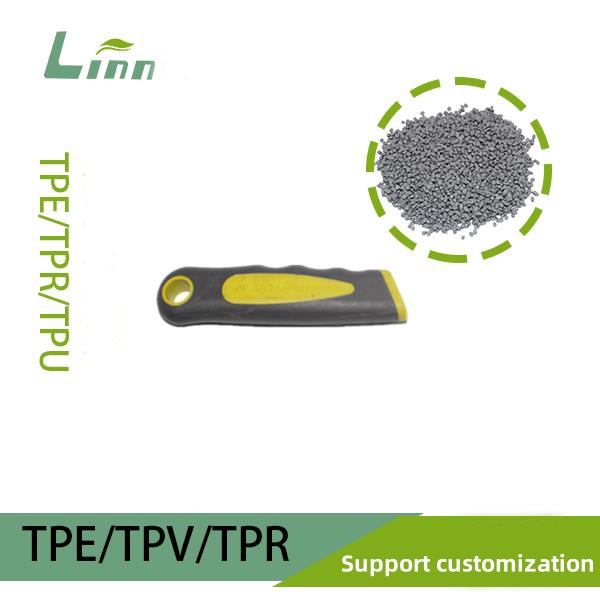As someone who’s spent years working with materials in industries like manufacturing, automotive, and consumer goods, I’ve come across countless questions about Thermoplastic Rubber (TPR). One of the most common queries is whether TPR has an odor and what exactly this material is. Having handled TPR in various projects, from designing soft-grip tools to specifying materials for eco-friendly toys, I’ve learned the ins and outs of its properties, applications, and quirks. Let me share my insights to help you understand TPR and address the odor concern.

Understanding TPR: What Is It?
TPR, or Thermoplastic Rubber, is a fascinating material that blends the elasticity of rubber with the processability of plastic. It’s part of a broader family called Thermoplastic Elastomers (TPE), but TPR specifically is often based on Styrene-Butadiene-Styrene (SBS) or, in some cases, Styrene-Ethylene-Butylene-Styrene (SEBS) block copolymers. These compounds give TPR its unique ability to stretch like rubber and be molded like plastic, making it a go-to choice for products requiring flexibility, durability, and ease of manufacturing.
Unlike traditional thermoset rubbers, which require vulcanization (a chemical curing process), TPR can be melted, molded, and recycled without losing its core properties. This recyclability is a big reason why it’s gained popularity in industries striving for sustainability. From shoe soles to medical devices, TPR’s versatility is unmatched. But before diving into its applications, let’s break down its key characteristics.
Key Properties of TPR
To give you a clear picture, here’s a snapshot of TPR’s main properties:
|
Property |
Description |
Value Range |
Notes |
|---|---|---|---|
|
Elasticity |
Mimics rubber’s stretch and recovery |
200%–1500% elongation |
Ideal for flexible components |
|
Temperature Range |
Operates well in moderate temperatures |
-30°C to 140°C (-22°F to 284°F) |
May soften at extreme heat |
|
Recyclability |
Can be melted and reshaped multiple times |
High recyclability |
Eco-friendly compared to thermoset rubber |
|
Chemical Resistance |
Resists oils, greases, and some solvents |
Good to excellent |
Varies with formulation |
These properties make TPR a favorite for products like shoe soles, soft-grip handles, toys, and automotive seals. But what about the odor? That’s where things get interesting.
Does TPR Have an Odor?
If you’ve ever unpacked a new TPR-based product, like a yoga mat or a toy, you might’ve noticed a faint smell—sometimes described as “factory-fresh” or slightly chemical. This brings us to the heart of the question: Does TPR inherently have an odor, and if so, why?
The Science Behind TPR’s Odor
Odor in materials like TPR comes from volatile organic compounds (VOCs)—small molecules that evaporate into the air and reach our noses. In TPR, these VOCs often originate from:
Softening Oils: TPR formulations often include oils like naphthenic or paraffinic oils to adjust softness. These oils, especially if low-quality or poorly hydrogenated, can release VOCs during processing or when exposed to heat.
Additives: Fillers, stabilizers, or plasticizers added to enhance TPR’s properties can contribute to odor, particularly if they’re high in VOC content.
Processing Conditions: High temperatures during injection molding or extrusion can cause oils and additives to volatilize, leaving a residual smell in the final product.
In my experience, the intensity of TPR’s odor depends on the formulation and processing techniques. For instance, TPR with a low hardness (e.g., 0–30 Shore A) tends to have a stronger smell because it contains more softening oils. Conversely, higher-hardness TPR (70–100 Shore A) often smells less due to lower oil content.

Is the Odor Harmful?
One concern I often hear is whether TPR’s odor indicates toxicity. From what I’ve seen in material safety data sheets and industry standards, TPR is generally non-toxic and safe for applications like food-grade products and medical devices, provided it meets regulations like FDA compliance or RoHS standards. The odor itself is typically harmless, resulting from non-toxic VOCs like those from hydrogenated oils. Unlike materials like PVC, which can emit harmful chlorine odors when burned, TPR’s smell is often described as aromatic or petroleum-like and doesn’t pose health risks under normal conditions.
However, a strong odor can still be off-putting, especially in consumer products like toys or car interiors. I’ve worked with clients who were adamant about minimizing smells to improve user experience, and there are ways to achieve this.
How to Minimize TPR’s Odor
Over the years, I’ve picked up several strategies to reduce or eliminate TPR’s odor, especially for sensitive applications like children’s toys or medical equipment. Here’s what works:
1. Choose Low-VOC Materials
Selecting high-quality, highly hydrogenated oils (like secondary hydrogenated oils) is critical. These oils have lower VOC content, reducing the smell during processing and in the final product. When I collaborated with a toy manufacturer, switching to low-VOC oils cut the “factory smell” significantly.
2. Optimize Processing Conditions
High temperatures during molding can amplify VOC release. Keeping the processing temperature low—around 180°C in the shear section and 160°C in later sections—helps minimize odor. I once advised a factory to lower their injection molding temperature, and the difference was noticeable within days.
3. Allow for Ventilation
After molding, TPR products should be left to cool and ventilate for at least 48 hours before packaging. This allows VOCs to dissipate naturally. In one project, we stored freshly molded TPR grips in a well-ventilated area for two days, and the odor was barely detectable afterward.
4. Use Odor-Neutralizing Additives
Some manufacturers incorporate odor-neutralizing additives like Ecosorb into TPR formulations. These additives, made from plant-based oils, can neutralize VOCs during production, making the final product smell fresher. I’ve seen this approach work wonders in automotive applications where cabin air quality is a priority.

5. Post-Processing Techniques
For end-users, if a TPR product like a yoga mat or eraser has a lingering smell, simple tricks can help:
Air it out: Place the product in a well-ventilated area for a few days.
Baking soda: Store the item in a sealed bag with baking soda to absorb odors.
Vinegar wash: For washable items, a mild vinegar solution can neutralize smells without damaging the material.
I once helped a client with a batch of TPR shoe soles that customers complained about. A combination of ventilation and a baking soda treatment resolved the issue without affecting the product’s quality.
Applications of TPR: Where You’ll Find It
TPR’s versatility makes it a staple in many industries. Here are some common applications, along with considerations for odor:
|
Application |
Why TPR? |
Odor Consideration |
Example Products |
|---|---|---|---|
|
Footwear |
Flexible, slip-resistant, durable |
Low odor preferred for consumer comfort |
Shoe soles, flip-flops |
|
Toys |
Non-toxic, soft, moldable |
Odor must be minimal for child safety |
Squeeze toys, erasers |
|
Automotive |
Vibration damping, chemical resistance |
Low VOCs critical for cabin air quality |
Seals, gaskets, mats |
|
Medical Devices |
Biocompatible, flexible |
Odorless preferred for patient comfort |
Catheter tubing, grips |
In my work with automotive suppliers, TPR’s ability to dampen vibrations while resisting oils made it ideal for gaskets. However, we always prioritized low-odor formulations to avoid complaints about “new car smell.” Similarly, in toy production, ensuring TPR meets PAHS, RoHS, and REACH standards is non-negotiable for safety and odor control.
TPR vs. Other Materials: Odor and Performance
To put TPR in context, let’s compare it with similar materials like TPE, PVC, and silicone in terms of odor and key properties:
|
Material |
Odor Profile |
Key Properties |
Best For |
|---|---|---|---|
|
TPR |
Mild, aromatic; can be minimized |
Elastic, recyclable, cost-effective |
Shoe soles, grips, toys |
|
TPE |
Similar to TPR, slightly less odorous |
Higher heat resistance, better aging |
Medical devices, high-performance parts |
|
PVC |
Strong, chlorine-like when burned |
Rigid or flexible, less elastic |
Pipes, cables (not food-grade) |
|
Silicone |
Odorless, high inertness |
Heat-resistant, biocompatible, less elastic |
Kitchenware, medical implants |
From my experience, silicone is the gold standard for odorless applications, but it’s pricier and less elastic than TPR. PVC, while cheaper, often has a stronger, less pleasant odor, especially when processed or burned. TPE, being a broader category, can sometimes outperform TPR in high-temperature applications but may cost more.
Real-World Insights: My Experience with TPR
I remember a project where we were developing TPR-based grips for kitchen utensils. The client wanted a soft, non-slip handle but was concerned about odor affecting the user experience. We worked closely with the material supplier to select a SEBS-based TPR with low-VOC oils and adjusted the molding process to keep temperatures low. After ventilating the products for 72 hours, the grips were virtually odorless, and the client was thrilled with the result.
Another time, I consulted on a toy production line where parents complained about a “plastic” smell in TPR squeeze toys. By switching to a higher-hardness TPR and adding an odor-neutralizing additive, we reduced the smell significantly while maintaining the toy’s squishy feel. These experiences taught me that while TPR can have a mild odor, it’s manageable with the right approach.

Environmental and Safety Considerations
One thing I love about TPR is its eco-friendly potential. Unlike vulcanized rubber, TPR can be recycled, reducing waste in manufacturing. However, its recyclability depends on local facilities, as processing low-volume materials like TPR can be challenging.
From a safety standpoint, TPR is often FDA-compliant for food-grade applications and biocompatible for medical uses. Its non-toxic nature makes it safe for toys and consumer goods, but always verify certifications like SGS or TUV to ensure compliance.
Practical Tips for Choosing TPR
If you’re considering TPR for a project or wondering how to handle its odor, here’s my advice based on years of trial and error:
Work with Reputable Suppliers: Choose suppliers who provide detailed material data sheets and low-VOC formulations.
Test Samples: Always request samples to check for odor and performance before committing to a large batch.
Specify Hardness: Higher-hardness TPR tends to have less odor, so balance flexibility with odor control.
Ventilation is Key: Whether you’re a manufacturer or end-user, allow TPR products to air out before use or packaging.
Consider Alternatives: If odor is a dealbreaker, explore silicone or SEBS-based TPE for odorless options, though they may cost more.
Wrapping Up
TPR is a remarkable material that bridges the gap between rubber and plastic, offering flexibility, durability, and recyclability. While it can have a mild odor due to VOCs from oils and additives, this is rarely harmful and can be minimized through careful formulation, processing, and post-treatment. Whether you’re designing a product or using a TPR-based item, understanding its properties and odor profile can help you make informed decisions.
In my years working with TPR, I’ve seen it transform industries, from creating comfortable shoe soles to improving automotive interiors. With the right approach, you can harness its benefits while keeping odors at bay. If you’re dealing with a specific TPR-related issue, feel free to dive into the Q&A below or reach out to a material expert for tailored advice.

Related Questions and Answers
Q: Is TPR safe for children’s toys?
A: Yes, TPR is generally non-toxic and safe for toys, especially when it meets standards like RoHS, PAHS, and REACH. Always verify certifications and opt for low-odor formulations to ensure child safety.
Q: How does TPR compare to silicone in terms of odor?
A: Silicone is typically odorless due to its high inertness, while TPR may have a mild aromatic smell. For odor-sensitive applications, silicone might be a better choice, but TPR is more cost-effective and elastic.
Q: Can I remove the smell from a TPR yoga mat?
A: Absolutely! Air it out in a well-ventilated space for 2–3 days, or place it in a sealed bag with baking soda to absorb odors. A mild vinegar wash can also help, but test a small area first.
Q: Why does my TPR product smell stronger in hot weather?
A: Heat causes VOCs in TPR to volatilize more readily, intensifying the odor. Store the product in a cool, ventilated area to minimize this effect.
Q: Is TPR environmentally friendly?
A: TPR is recyclable, making it more eco-friendly than thermoset rubbers. However, actual recycling depends on local facilities, and its petroleum-based nature raises some sustainability concerns.





